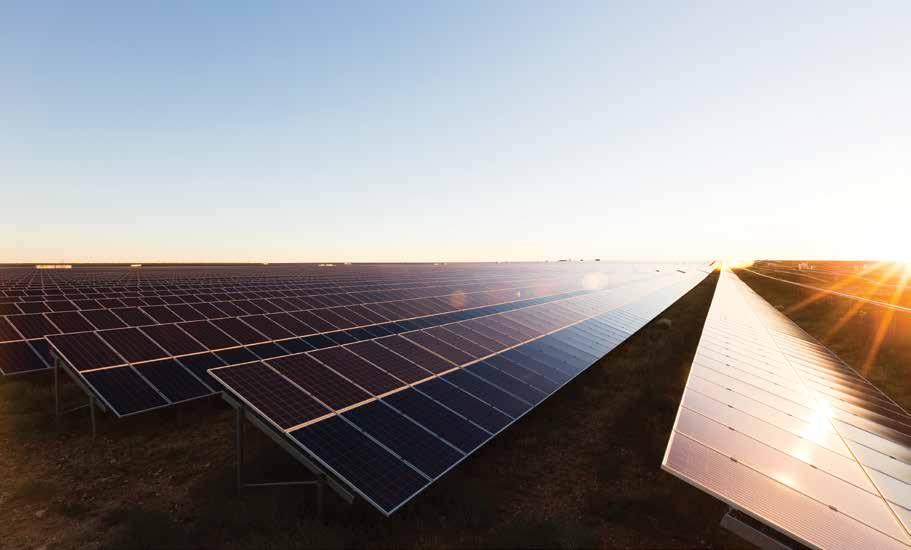
3 minute read
South Africa's Renewable Energy Transition: A Pathway to a Competitive Advantage
By Stuart MacWilliam, Mulilo Energy Head of Strategy and M&A
South Africa has long held an energy production edge by utilising its low-cost coal resources. t his historical advantage allowed the nation to industrialise ahead of those with limited fossil fuel resources. As the global energy landscape shifts towards sustainability, South Africa stands on the brink of a transformative opportunity. By harnessing low-cost electricity from its abundant natural solar and wind resources, the country could secure another competitive economic advantage on the global stage.
Wind is now South Africa’s ally in reshaping its energy future. Coastal regions feature consistent and strong wind patterns that efficiently turn turbines to generate electricity. notably, wind energy is nearly 50% cheaper than anticipated costs for new coal-powered stations like Medupi and Kusile. this cost advantage positions South Africa favourably against other transitioning nations, highlighting its potential to emerge as a renewable energy leader.
South Africa’s also boasts remarkable solar potential, with most regions fetching over 2,500 hours of annual sunshine, substantially higher than the European average of 1,000.
Due to this natural advantage, solar electricity costs in South Africa are presently less than 80 cents per kilowatt hour, substantially lower than the global average of 135 cents per kilowatt hour.
Our abundant resources are enhanced by the country’s landscape. South Africa’s landscape provides ample opportunities for renewable energy development in areas like the Karoo and along the country’s coastline. these areas feature flat terrains, sparse vegetation, and low population densities, providing opportune spaces for renewable energy development. in contrast, locations like italy, Germany, and the uS frequently grapple with the overlap between developed zones and regions of solar and wind potential, constraining their ability to fully harness those resources.
By the private sector investing in renewables, South Africa can create a virtuous cycle of economic growth and position itself as a pioneer in a rapidly evolving global energy landscape. independent power producers like Mulilo are at the forefront of developing renewable energy projects in South Africa. with a project pipeline of 25 gigawatts, Mulilo is poised to insert over R100 billion into South Africa’s economy – supporting both the country’s energy needs and its economy.
This investment will spur employment, as skilled workers are needed for the construction, operation, and maintenance of renewable energy infrastructure. Furthermore, low-cost electricity from these renewable energy investments will allow for the reopening of load-shedding- and costenforced closures of mines and factories, helping South Africa re-industrialize its economy.
South Africa’s pursuit of renewable energy represents more than a shift in power sources—it signifies a strategic leap towards economic prowess and global leadership. with an array of natural assets at its disposal, from the ever-present wind to the radiant sun, and an optimal landscape for development, the nation is poised to capture economic and cost advantages and embark upon a period of global energy leadership.










